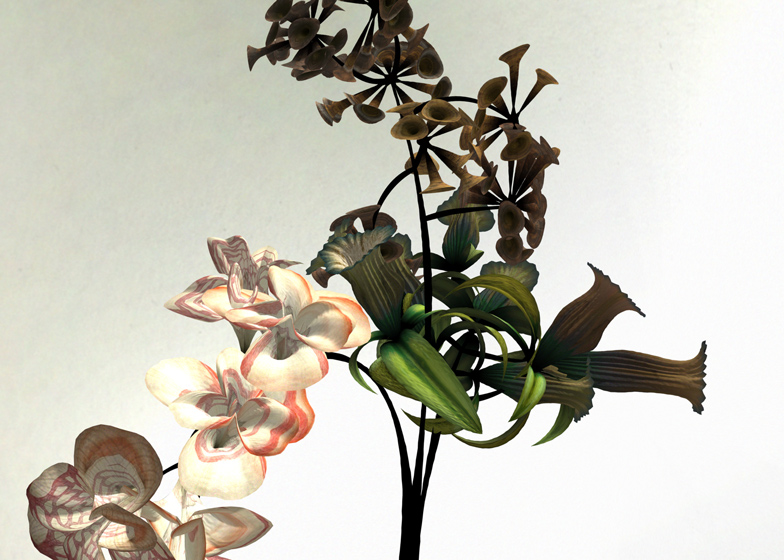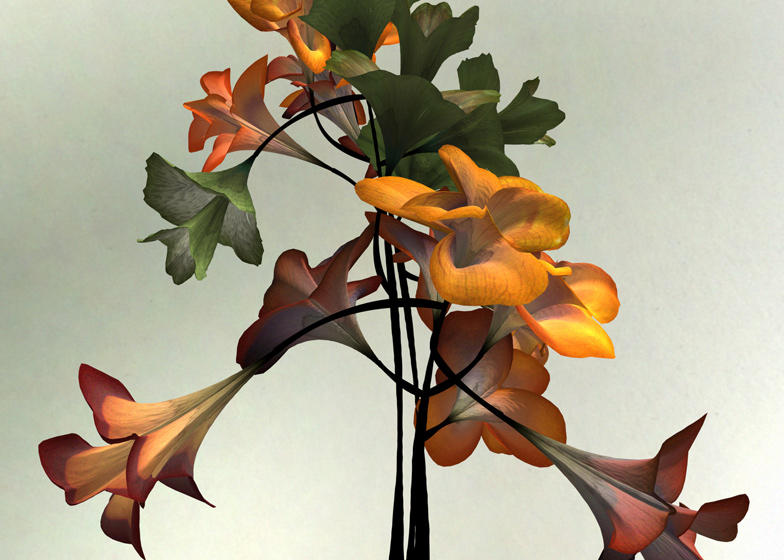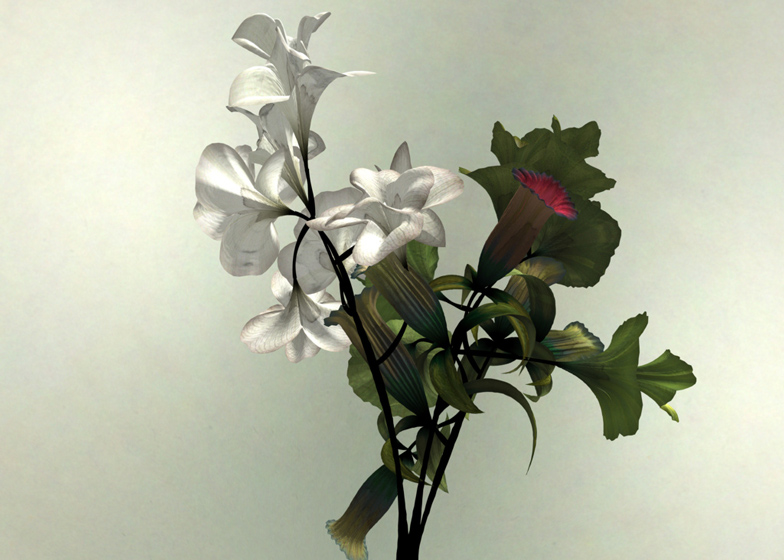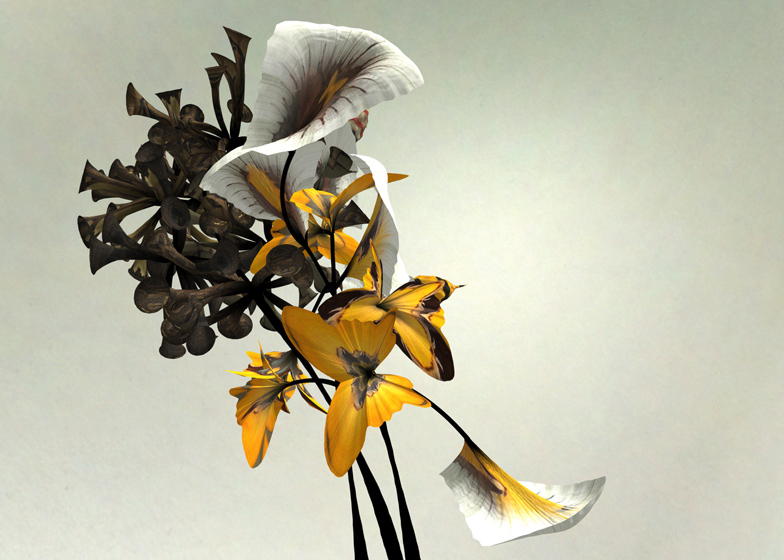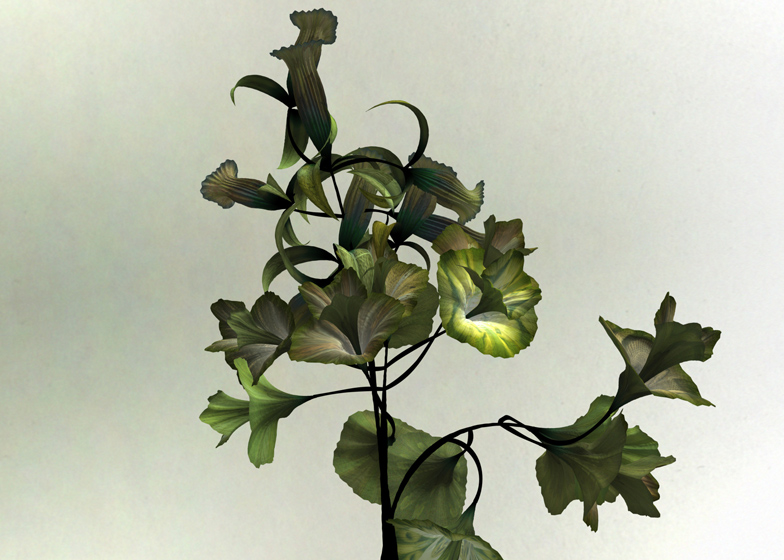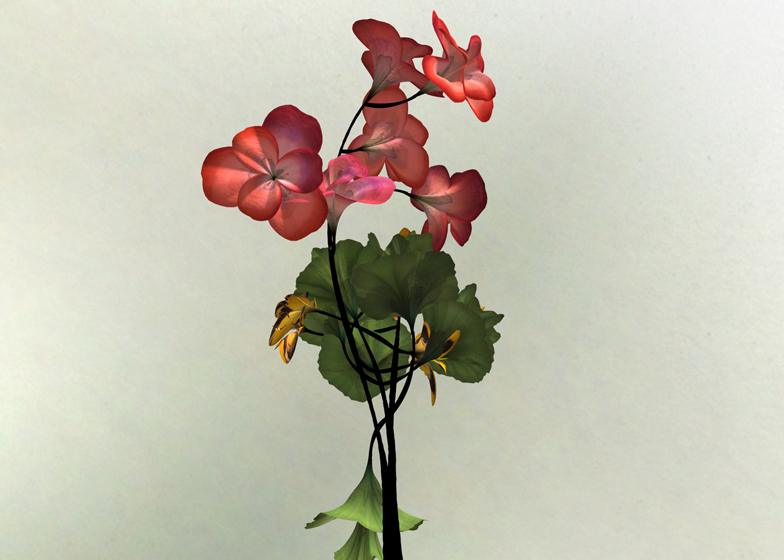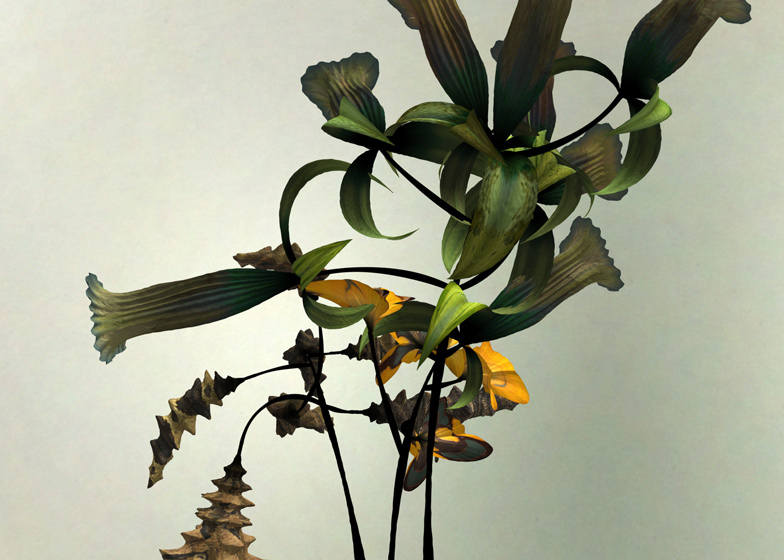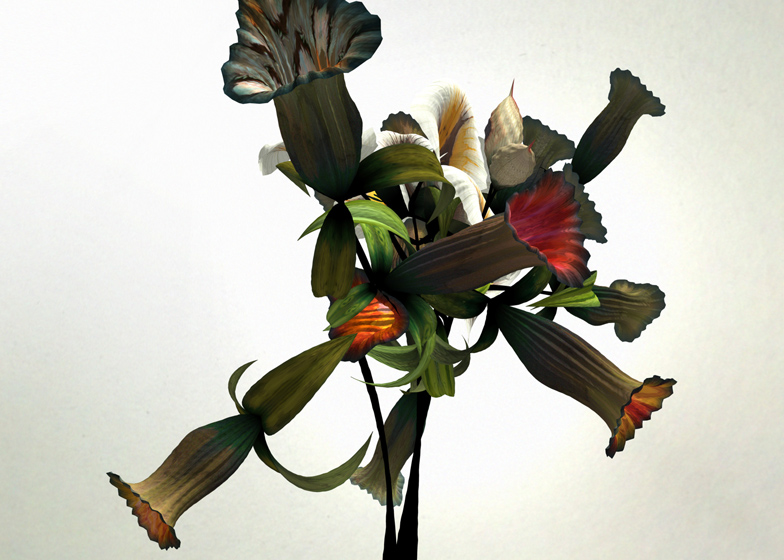British digital designer Daniel Brown has created a new series of his animated flowers that "grow" according to computer algorithms (+ slideshow).
Daniel Brown's Darwin animation is derived from the shapes and textures of exhibits at the D'Arcy Thompson Zoology Museum in Dundee.
It shows a three-dimensional image of flowers that appear to grow in a generative pattern, creating unique blooms derived from colours, patterns and forms found in the museum's collection of historical taxidermy and plant samples.
"The shape of the stems and flowers are generated using splines and 3D surfaces that follow mathematical equations," Brown told Dezeen. "A second formula generates petal surfaces by taking segments of images of the museum exhibits, and arranges these to create seamless larger textures."
He added that the two-stage process means every bloom will be unique: "The combination of the two [formulas] ensures that no two generated flowers will ever look quite the same."
Various plants and animals from the museum's collection informed the shape the digital plants grow into, while the surfaces of petals and leaves are decorated with patterns influenced by textures taken from the same sources. "For example, the colourful bulbous stamens that appear on some plants take their form from birds in the collection, and their rich texture comes from their plumage," Brown explained.
Brown employed techniques similar to those used in the production of computer games and cinematic special effects to develop an animation specially for the museum that pans around the flowers as they evolve.
The visuals are designed to be suitable for vertical or horizontal projection so the installation can be presented in a variety of different spaces throughout the museum, or even tour other galleries.
Over the past ten years, Brown has been developing algorithms based on mathematical principles which can generate realistic-looking flowers that never repeat the same characteristics.
The original flower series called On Growth and Form was named after a book written in 1917 by Sir D'Arcy Wentworth Thompson, the biologist and professor after whom the museum at the University of Dundee is named.
Brown said the processes explored by Thompson in the book influenced his investigations into the relationship between nature and mathematics. "My work essentially uses the same thinking but in a practical context rather than theoretical: using seemingly 'cold' mathematical equations to create hyper-real organic behaviour," he explained.
The museum commissioned the installation as part of a collection of new works it is compiling called the Renew Project, which is inspired by D'Arcy Thompson's legacy and influence on the artistic world.
Brown has previously produced animations for installations at the Design Museum and Victoria & Albert museum in London, as well as working on interactive interfaces, websites and projects for architecture and fashion. His website for fashion brand Mulberry generated unique flowers that users could send to their loved one on Valentine's Day.
The designer sent us the following project description:
Darwin – a new artwork by Daniel Brown for the D'Arcy Thompson Zoology Museum
"The harmony of the world is made manifest in Form and Number and the heart and soul and all the poetry of Natural Philosophy are embodied in the concept of mathematical beauty" - Sir D'Arcy Wentworth Thompson, from On Growth and Form.
London-based designer and digital artist Daniel Brown is pleased to announce the recent completion of a specially created artwork for the D'Arcy Thompson Zoology Museum.
Commissioned by the University of Dundee Museum Services with grant funding from the Art Fund, the work uses shapes and textures taken from and inspired by exhibits in the museum. The work is part of the museum’s 'Renew' programme
Over the past ten years Brown has become known for creating his 'Flowers' series – ornate artworks that use complex mathematics to generate never repeating floral animations. The series was originally entitled 'On Growth and Form' in homage to D'Arcy Thompson's pioneering book and Brown states 'it was an honour and the ultimate privilege to create an artwork for the museum given the huge influence Thompson’s book has had on my work'.
The piece is the first in a new phase of the series, utilising cutting edge 3D technology that is more commonly used for computer games and cinema features, creating realistic-looking flowers that grow on screen like time-lapse documentary photography. It is designed to work both in portrait and landscape arrangement to allow for large format projection and flat-screen presentation in different spaces.
Previous pieces from the series have been exhibited at the London Design Museum and a three-story-high projected version was commissioned by the Victoria & Albert as the entrance feature for their Decode – Digital Art Sensations blockbuster show that took place from December 2009 to April 2010.
Brown was voted Designer of the Year in 2004 – the year after Apple design guru Jonathan Ive was also awarded this major national accolade. Ive commented that… "Daniel Brown's work changes the way we look at and engage with digital imagery. It is technically innovative and emotionally engaging, but also gives us an extraordinary amount of freedom in the way we experience it".


